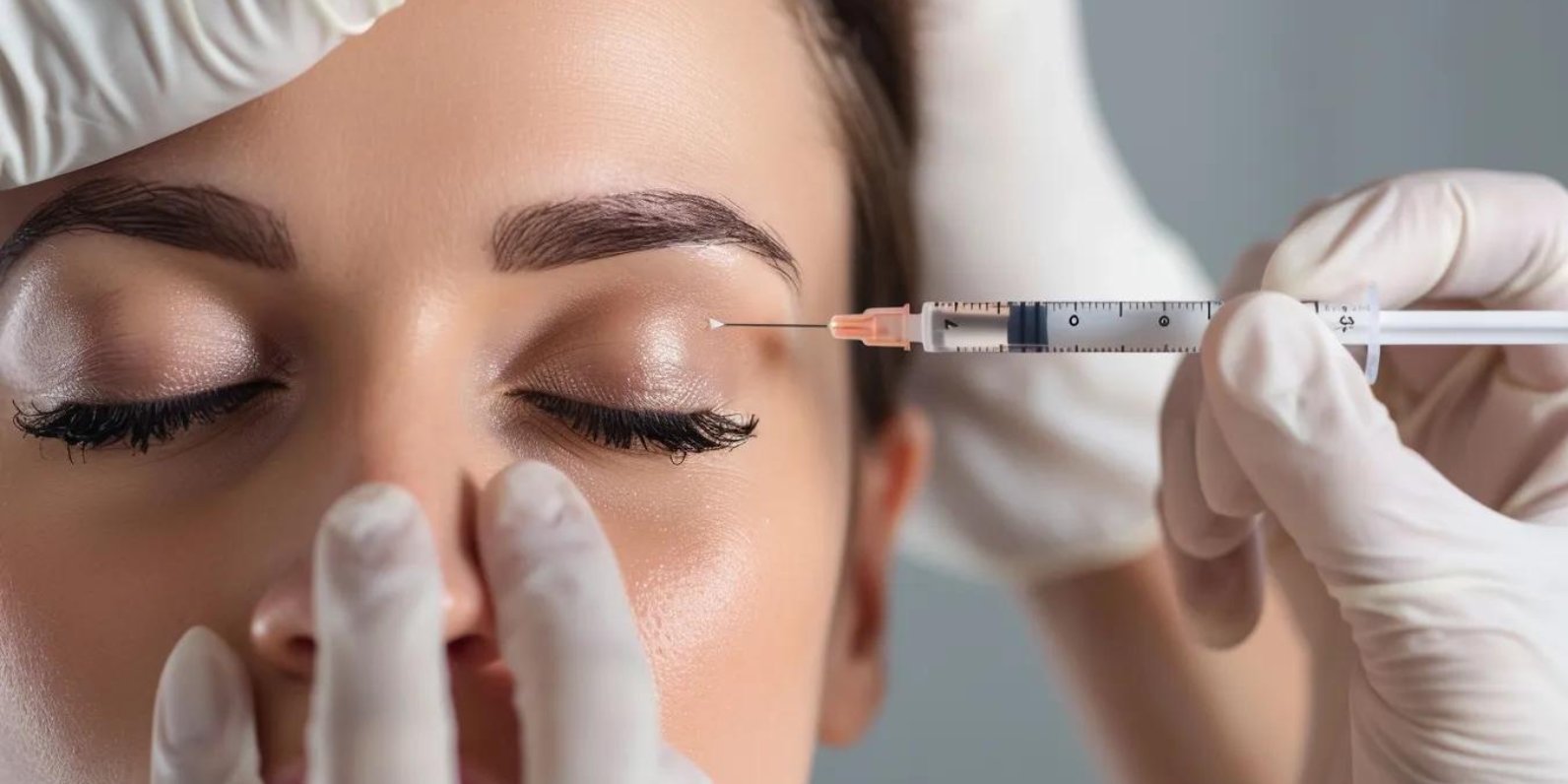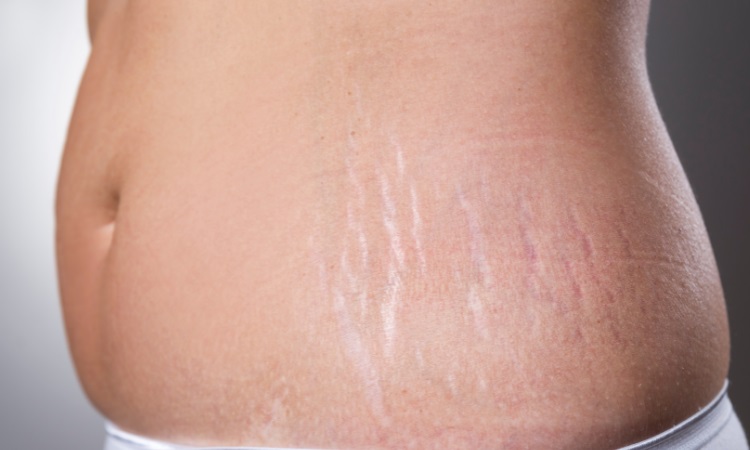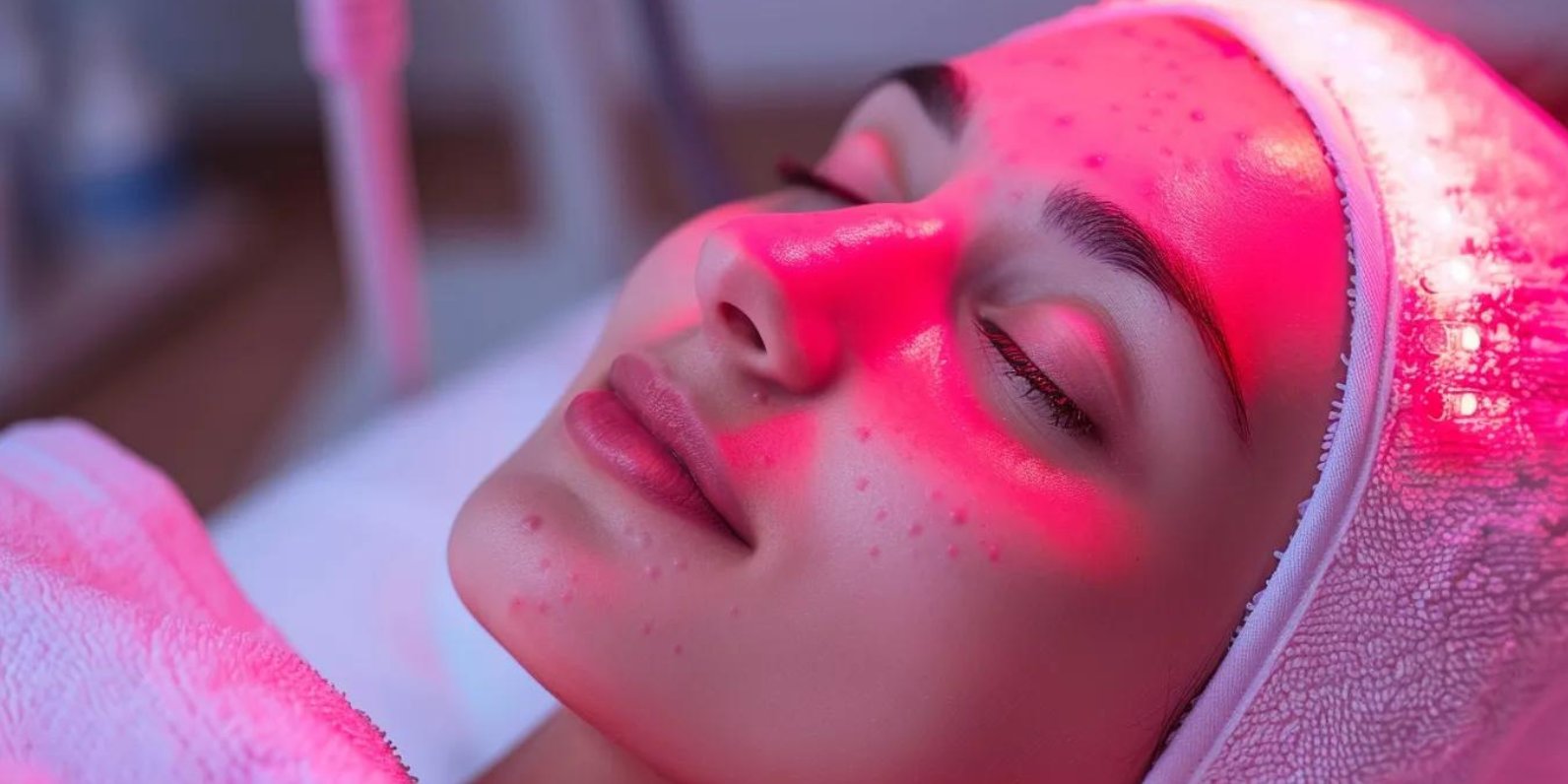What Treatments Get Rid of Stretch Marks?
We offer several treatments for your stretch marks, including:
The SaltFacial™ L’ Advantage
This innovative three-step treatment uses a special salt treatment for deep resurfacing, followed by ultrasound treatment to improve the skin’s response to treatments at a deeper level. The last step uses powerful LED light energy to stimulate collagen and elastin as well as brighten the skin.
Secret™ RF Microneedling
Microneedling helps break up scar tissue and improve the tone and texture of the skin. The Secret™ RF microneedling device uses radiofrequency energy to penetrate the deeper layers of skin to stimulate collagen production.
Morpheus8®
This microneedling device uses radiofrequency energy to stimulate collagen production and improve cell turnover, resulting in brighter, more youthful-looking skin with fewer imperfections. Morpheus8® can treat stretch marks on other parts of the body wherever they appear.
BBL HERO by Sciton
This treatment uses broadband light to treat the face and body. This broad variety of wavelengths lets this treatment target many different issues with pigmentation and skin evenness. The BBL HERO can target the altered pigmentation in stretch marks as well as helping to smooth the uneven texture.
excel® V Laser system
Often used to treat visible veins and other vascular problems, this laser system also excels at targeting pigmentation issues, including the altered pigmentation of stretch marks, helping to fade them and help them blend in evenly with the surrounding skin.
Active FX™ and Deep FX™
These CO2 fractional lasers have a powerful ability to treat superficial skin issues and ones that lie deeper in the skin, like stretch marks and scars. Combined together, these two treatments can give patients brighter, more even-toned skin with diminished stretch marks.
The Limelight
This laser treatment targets hyperpigmentation and other pigment concerns. If your stretch marks have noticeably different pigmentation than the surrounding skin, this treatment can even out this visible pigmentation and make the area look more even-toned.
Comparison of Treatment Options
Which Treatment is Right for You?
There are several treatment options available for reducing the appearance of stretch marks. Each has its own benefits and drawbacks, depending on the age, depth, and color of the marks.
Topical Treatments: Retinoid creams are often recommended for newer stretch marks. They work by increasing collagen production, which helps improve the skin’s texture. However, they are less effective on older marks and should be avoided during pregnancy.
Laser Therapies: Laser treatments, such as CO2 fractional lasers and Intense Pulsed Light (IPL), target deeper layers of the skin to stimulate collagen and elastin production. These treatments can reduce pigmentation and smooth the skin but may require multiple sessions and involve some recovery time.
Microneedling: This involves using tiny needles to create micro-injuries in the skin, which triggers collagen production. When combined with radiofrequency, it can enhance skin tightening and improve texture. Microneedling is particularly effective for older, more stubborn stretch marks.
Each treatment varies in cost, required sessions, and potential side effects. Consulting with a dermatologist can help determine the best option based on your skin type and the severity of your stretch marks.
What works for permanent stretch mark removal?
Permanent stretch mark removal is possible with laser resurfacing, RF microneedling, and collagen-inducing peels. While no method can guarantee full erasure, technologies like Active FX, Deep FX, and Morpheus8 achieve long-term improvements in texture and tone. These treatments boost collagen, even pigmentation, and rebuild skin layers. Multiple sessions lead to sustained results, especially for older marks.
Am I a Good Candidate for Stretch Mark Treatment?
With our variety of treatment methods, you will almost certainly be a candidate for one or more of them. Almost anyone can have their stretch marks treated.
How to remove male stretch marks?
Men can remove stretch marks using laser, microneedling, and radiofrequency treatments tailored to thicker skin. At FACE, we treat male stretch marks on the chest, arms, shoulders, and abdomen with technologies like Morpheus8 and Secret RF. These devices rebuild collagen and fade visible scars. Results improve with multiple sessions and proper skin hydration. Treatments are safe for all skin types.
Psychological and Emotional Impact of Stretch Marks
How Do Stretch Marks Affect You Emotionally?
Stretch marks can have a significant impact on mental and emotional well-being. Many people feel self-conscious about their appearance, especially when the marks are in visible areas like the abdomen, thighs, or breasts. This can lead to a decline in self-esteem and body image.
For some, the presence of stretch marks can trigger stress, anxiety, or even depression. These feelings are particularly common during life stages that already involve body changes, such as adolescence or postpartum periods.
Addressing the emotional effects of stretch marks is just as important as treating the physical ones. Talking to a healthcare provider about both the physical and emotional impacts can be a helpful step in managing these concerns. Treatment can offer not just aesthetic improvements but also a boost in confidence and overall well-being.








